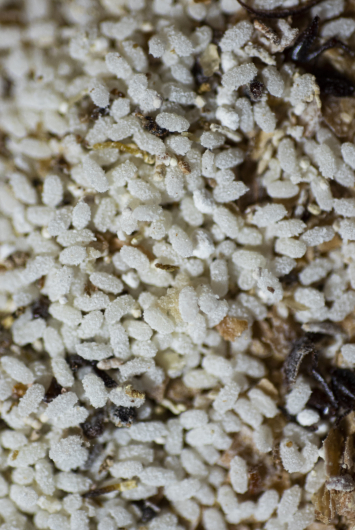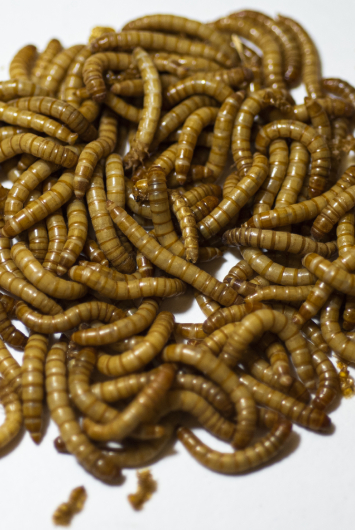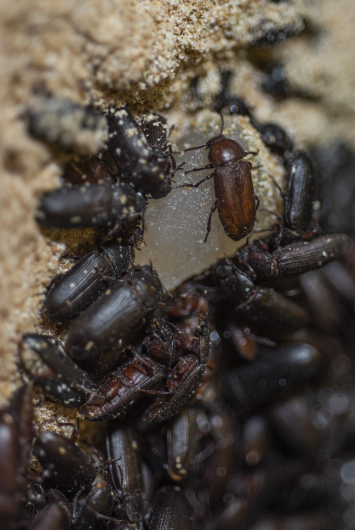TENEBRIO MOLITOR
The Tenebrio molitor, also known as yellow mealworm, is an insect that belongs to the order Coleoptera. This is largest order in terms of number of species of insects, more than 400000 which are almost 40% of all species of insects. The yellow mealworm belongs to the family Tenebrionidae, which comes from the latin “tenebris” and means “darkness”. In fact, these insects avoid light and has a nocturnal behaviour. The diet of choice of this beetle are the cereals and grains stored in the silos, and it has been studied for more than 100 years, as a minor pest of stored grains.
In recent years, the yellow mealworm it has gained interest as potential feed and food animal. Its nutritional composition, rich in protein, with its relative fast cycle, low requirements in terms of water and space make it a good candidate to be mass reared for producing protein-rich ingredients for both humans and animals.
Such as many other insects, like bees, butterflies and ants, the yellow mealworm is a “holometabolous insect”. This means that it will go through a complete metamorphosis during its life cycle. The immature stage of the insect, commonly known as larva, will transform into the adult insect, or imago, passing through a pupal stage, where the insect is immobile and does not feed. Larvae, when they hatch from the eggs, are about 1mm long, and, in the span of 10 weeks, they will become 5 cm long. Larvae are orange, have 6 legs and have a darker head. Larvae feed on grains, but they need also some water to survive. Even though this species is capable of absorbing moisture from the air, it is good practice to give them fruits or vegetables, from which they can get the water they need.
When larvae are close the end of their larval cycle, roughly around 10-11 weeks after hatching from the eggs, they will be sieved from the feeding substrate and this stage will be transformed in food or feed for animals. They can be dried and used as whole larvae for the pet food and human market, or transformed into powder that will be added to the ration of the most common farmed animals, such as chicken or fish.
When breeding yellow mealworms, a small percentage of the larvae is allowed to reach the pupa stage, and they will become the adults which will procreate and produce the offspring necessary to continue the cycle. Pupae are less elongated than larvae and whitish in colour, and during a week they will remain almost immobile, not feeding and wiggling the abdomen only if disturbed. After one week, they will transform into beetles, which at first are whitish and gradually turn black in a few days. Beetles have the same habits as the larvae, feeding on grains, cereals, fruits and vegetables for water and avoiding sunlight. Adult beetles do not fly, live from two to three months and start reproducing roughly after three weeks from the metamorphosis. The females will burrow into the substrate they are reared and bury their eggs inside, which will then hatch in a few days into small larvae to continue the cycle.
This species can be fed with by-products and leftovers from the cereal refining industry and with other kind of dry by-products of the food industry, making it a bioconverter of waste. The yellow mealworm can be reared with a circular economy approach, where the leftovers from a process they can be reintroduced and create new value.



